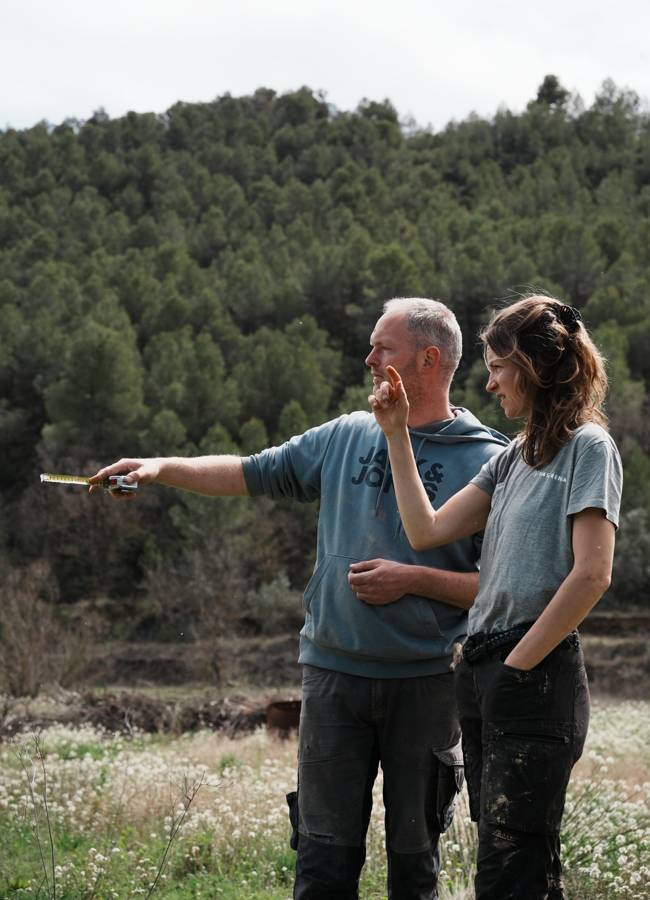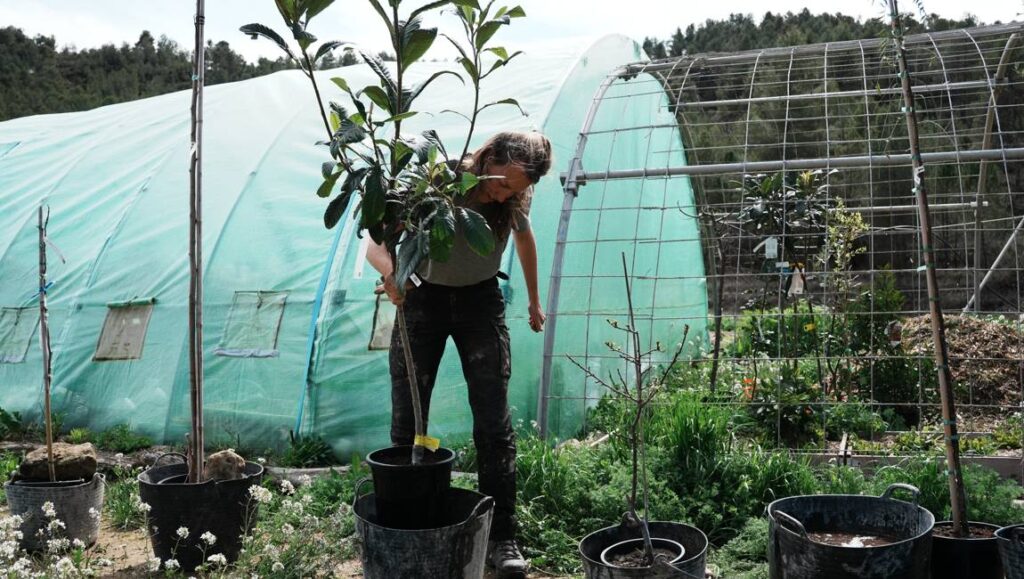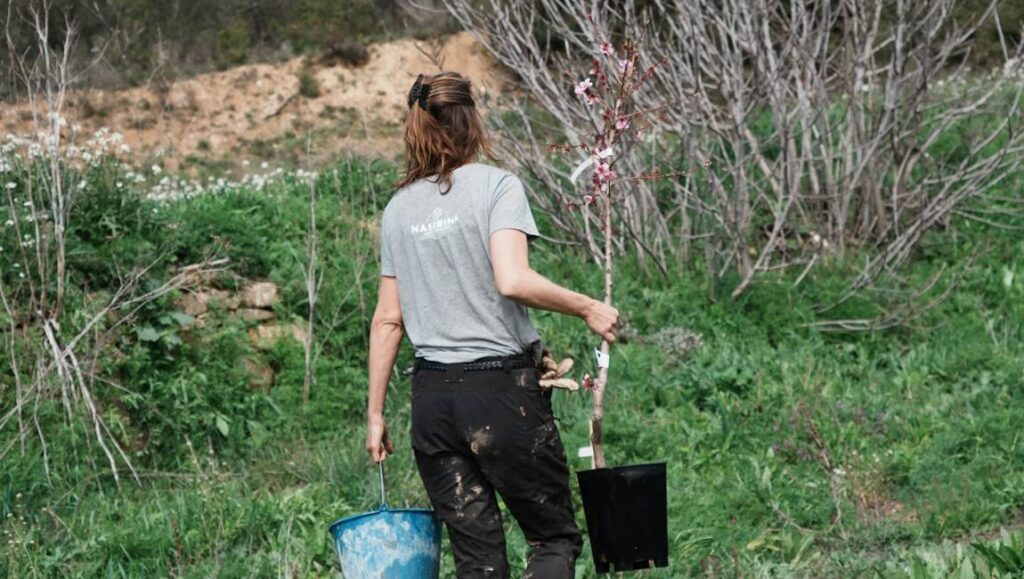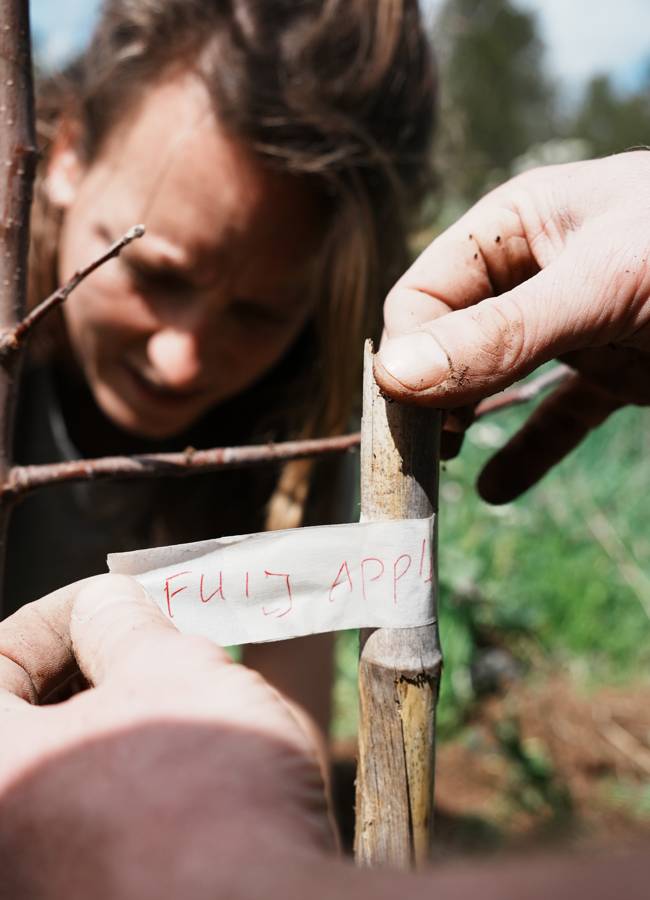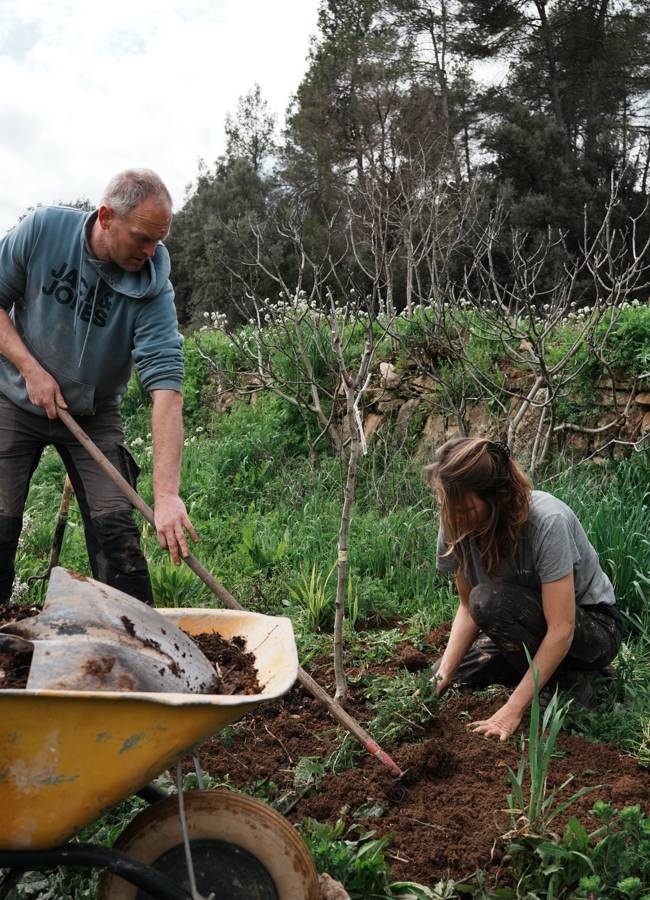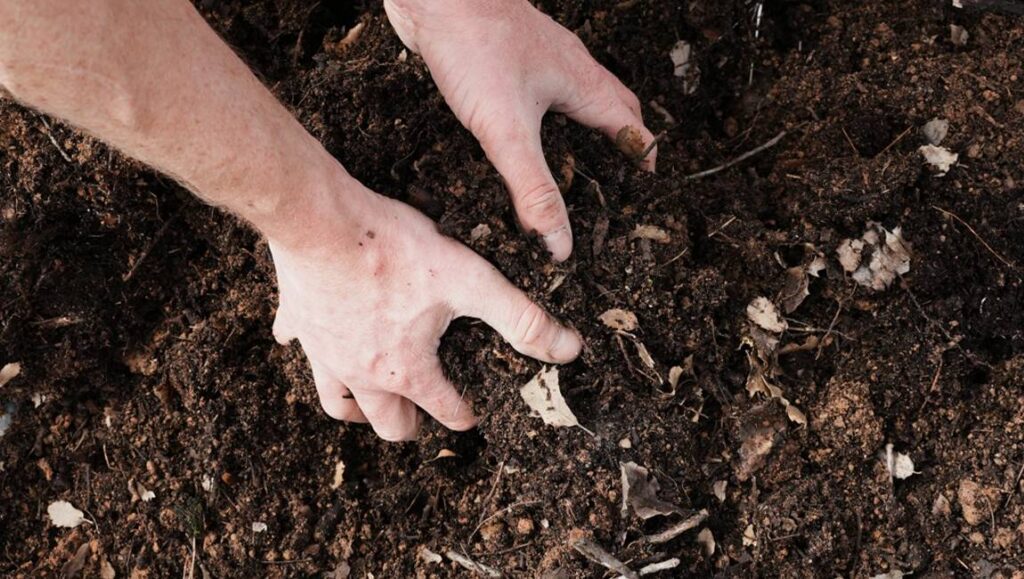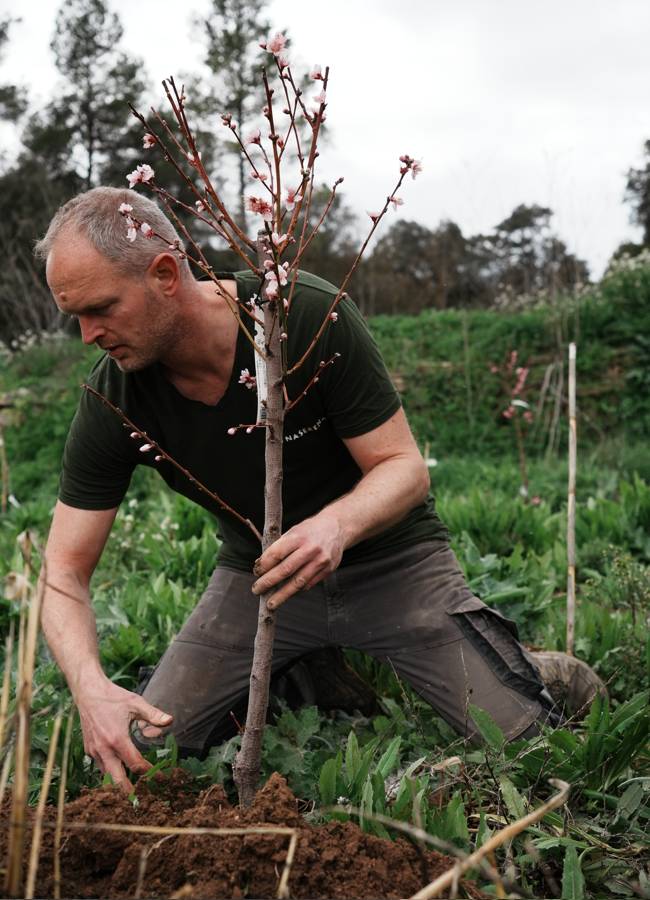On behalf of Stichting Naserena, we’ve started a very special project: the creation of a food forest. But what exactly is a food forest? A food forest is a human-designed ecosystem that mimics the structure and functions of a natural forest, but with the purpose of producing food, wood, herbs, and other useful products. Instead of working the land intensively with heavy machinery, artificial fertilizers, and pesticides, a food forest is all about collaborating with nature.
A food forest consists of multiple layers: from tall trees to low shrubs, ground covers, climbers, and even the root layer is utilized. Each plant, tree, or shrub serves several purposes. Some produce fruits or nuts, others attract insects or enrich the soil with nitrogen. The result is a system where biodiversity thrives, soil quality improves, and water is better retained. In the long term, a food forest becomes resilient and self-sustaining, contributing to a healthy relationship between humans and nature.


